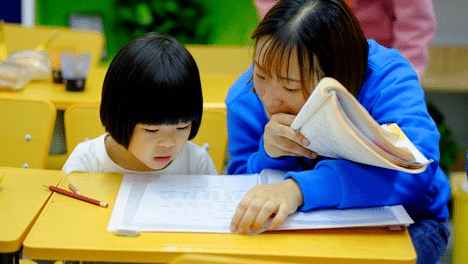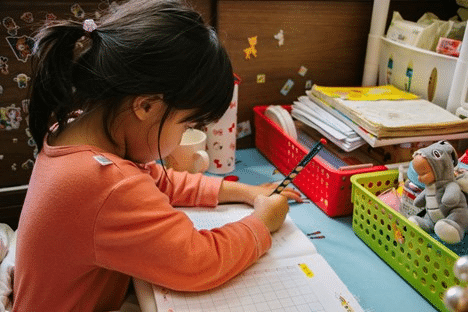The Science of Reading
The science of reading teaching is an extensively researched field of study. The Science of Reading, shortened in the field to SoR has been debated for nearly a hundred years, as organized school curricula began to be developed and approved.
What is the Science of Reading
The Science of Reading is a field of study that examines how children learn to read and how educators can best support this process. Research in this area has been ongoing for decades, with new studies emerging that shed light on effective teaching strategies and approaches. The Science of Reading is based on the premise that reading is a complex process requiring a range of skills and abilities, including phonemic awareness, phonics, fluency, vocabulary, and comprehension. Here are some of the key areas that the Science of Reading explores:
Phonemic Awareness
Phonemic awareness is the ability to hear and identify individual sounds, or phonemes, in spoken words. This is an important skill for early readers to develop, as it lays the foundation for phonics and word recognition. Teachers can support phonemic awareness by using activities such as sound games and rhyming exercises.
Phonics
Phonics is the relationship between sounds and letters, and involves using this knowledge to decode written words. Phonics instruction helps children understand the rules of the English language, such as how different letter combinations create different sounds. Decodable readers, such as those provided by Reading Teacher, are a valuable tool for teaching phonics.
Fluency
Fluency refers to the ability to read accurately, quickly, and with expression. Fluent readers are able to read smoothly and without hesitation, which helps them comprehend what they are reading. Teachers can support fluency by providing students with ample opportunities to practice reading aloud, as well as modeling fluent reading themselves.
Vocabulary
Vocabulary refers to the words that a reader knows and understands. Building a strong vocabulary is essential for comprehension, as readers need to be able to understand the words they are reading. Teachers can support vocabulary development by exposing students to a range of words through reading materials, word games, and other activities.
Comprehension
Comprehension is the ability to understand what has been read. This is the ultimate goal of reading instruction, as it allows readers to derive meaning from text. Teachers can support comprehension by teaching strategies such as predicting, questioning, summarizing, and clarifying. By using these strategies, students can better understand and remember what they have read.
By understanding these key areas of the Science of Reading, teachers can support their students in becoming confident, fluent readers who are prepared for academic success. By incorporating approaches and tools that are aligned with the Science of Reading, such as those provided by Reading Teacher, educators can help their students develop the skills and abilities they need to become successful readers.
How Reading Teacher aligns with the SoR
Reading Teacherr is a comprehensive platform that aligns with the Science of Reading by utilizing every tool that has been established to be beneficial in learning to read step by step, building confidence in young readers and establishing a strong foundation through phonics. It offers over 100 animated and interactive stories, spread over 25 different levels, which are designed to highlight each new phoneme through new words at least five times in the story it first appears in, and then continues to appear another five times in the next ten texts. This approach, along with high-frequency words, ensures that the reader is thoroughly familiar with the new words as they get reps at them.
Teachers can use Reading Teacher to support early literacy development by providing students with access to engaging, interactive stories that are aligned with the Science of Reading. The platform is designed to be used by parents, teachers, and independent learners, which makes it a versatile tool for any setting. Teachers can use the platform to monitor student progress, identify areas of weakness, and provide targeted interventions to support their students' growth.
In addition to providing a range of reading materials, Reading Teacher is dedicated to helping underprivileged children and communities access learning resources and reading programs. The platform remains at the forefront of science, providing tried and proven solutions for the advancement of young readers. By using Reading Teacher, teachers can support their students in becoming confident, fluent readers who are prepared for academic success.
According to research, children who struggle with reading in their early years are less likely to succeed academically in later years. By using Reading Teacher, teachers can ensure that their students are provided with a solid foundation in early literacy skills, setting them up for success in their academic careers.
 It’s generally well understood that children learn to speak through a combination of sounds and visual clues (e.g., learning to recognize how someone says “car” and associating that with the sights and sounds of a moving car). This, however, is not how we typically learn to read.
It’s generally well understood that children learn to speak through a combination of sounds and visual clues (e.g., learning to recognize how someone says “car” and associating that with the sights and sounds of a moving car). This, however, is not how we typically learn to read.
With alphabetical language, it is important to realize (and connect the dots) between certain combinations of letters and the type of phonetic sound they produce. This is now acknowledged as the preferred way to “decode” written text and create memories that then allow young readers to associate words through repeated sounds.
Decodable readers are a prime tool for developing such sound (no pun intended) memory. The other option is leveled reading, as explained below.
Start Teaching Reading for Free Now!
Access Level 1’s four interactive stories and the accompanying supplemental resources to teach elementary students how to read. No credit card is needed. Join the 42,635 teachers and students using our reading program.


